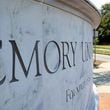The DeKalb County Board of Education approved the school district’s first $1 billion budget Tuesday night, though some residents and board members expressed concerns about how the money is being spent.
The budget passed with four votes, with board member Stan Jester voting no and Joyce Morley abstaining. Vice chairman Michael Erwin did not attend the meeting.
Officials announced several modifications before Tuesday night’s vote, including extra money for struggling schools, family engagement, hiring nurses, and music and other arts programs.
The budget includes a 2.25 percent raise for teachers and a 2 percent raise for everyone else, to go into effect Oct. 1.
Superintendent Steve Green announced a .1 mill tax rollback to 23.28 for the district’s millage rate.
At two public hearings on the millage rate, residents advised district officials against additional tax increases.
“We want to make sure the billion dollars is being spent wisely,” said Lance Hammonds, education chair for DeKalb County’s NAACP chapter.
DeKalb resident Judy Asher said a tax increase would only needed because of poor decision-making by past boards.
“People are going to start getting tired of being taxed and move out of DeKalb County,” Asher said.
Jester mentioned that the millage rate, even with the rollback, was one of the highest in the state, while neighboring districts spend more in the classroom. Of DeKalb Schools’ $1 billion budget, about 64 percent of the funds go toward classroom spending. In Fulton, about 70 percent of its budget goes to the classroom.
“I appreciate the rollback, but this is still the second-highest millage rate in the state,” Jester said. “I would like to see more money into the classroom.”
Morley said she was concerned that people with less than a year working for the district would be receiving raises.
She also brought up supplemental pay some in the administrative ranks receive that drives up salaries, often to the tune of $10,000 or more.
Critics have complained that declining test scores are linked the the school district’s spending more outside the classroom than other districts. Since Green became superintendent in 2015, administrative spending is up about 20 percent. He has added about a half dozen directors and two chief officers to his cabinet. The directors’ salaries are above $100,000 per year. The chief officers start at about $168,000 annually.
“Are we doing what we need to do” to budget fairly, Morley asked. “Yeah, we have a lot of money, but that doesn’t mean you spend it. Or we’ll be back where we were — broke, busted and disgusted.”







